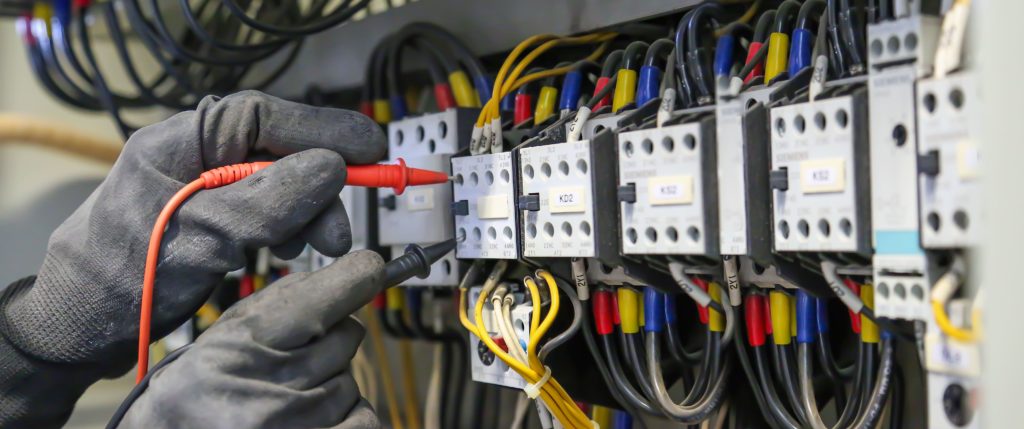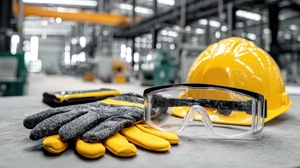Electrical Safety: Importance and Electrical Hazard Prevention

Electricity is all around us, it is a basic part of nature and a major source of energy. Electricity is used in homes and in industries. We use electricity in our everyday lives to power all types of machinery and equipment, and to do all types of work. We use it for something as basic as powering the lights in our homes and workplaces. As such, it is not surprising that the largest consumers of electricity are residential homes in the U.S. According to the U.S. Energy Information Administration, 39.4% of electricity consumed in 2020 was by the residential sector, while the commercial sector consumption was 34.6% and the industrial sector consumed 25.8% (2021). Electricity is so common that we use it all the time. The world has become so dependent on electricity that not having it is akin to a nightmare. However, as commonly used as electricity is, it can still be very dangerous! Even something as simple as changing a light bulb or attaching a plug to a socket can expose an individual to various electrical hazards.
What is Electricity?
Electricity is created by the flow of energy from one place to another when charged particles such as electrons and protons move from one place to another. These moving electrons have an electric charge which emits electricity. Electricity can be static when it is accumulated in one place or can flow as an electric charge in the form of current. Furthermore, the electricity that we use daily is a secondary energy source as it is created from the conversion of a primary source such as water (hydropower), sun (solar power), wind, natural gas, or coal. Sometimes, electricity is referred to as an ‘energy carrier’. This is because electricity can be converted to other forms of energy such as thermal (heat) and mechanical. Also, the primary source of energy can be renewable or non-renewable, but electricity is neither renewable nor non-renewable.
Importance of Working Safely with Electricity
The Occupational Safety and Health Administration (OSHA) has recognized electricity as a serious workplace hazard. This is because electricity has enough power to cause severe injury or death to those who are exposed to electrical current. According to Zemaitis et al., electrical injuries are predominantly accidental and can lead to heavy damage to human tissues and organs if the injury is not fatal. They also state that in the United States, electrical injuries cause about 1,000 deaths annually, of which, about 400 are due to high-voltage electrical injuries, and report about 30,000 non-fatal electrical shocks annually with about 5% of burn injuries being admitted to the burn unit because of electrical injuries (2021). It is reported that electrical injuries occur mainly in occupational settings for adults and is the fourth-leading cause of workplace-related traumatic death (Zemaitis et al., 2021). The sad truth about electrical injuries such as shocks, electrocution, burns, falls due to electrical shock, arc blasts, and fires are that it is most often preventable. All it requires is the adoption of good workplace practices and processes, and for employees to understand the hazards of working with electricity. This is the reason why organizations such as OSHA and the National Fire Protection Association (NFPA) have created standards and guidelines to be followed when working with or close to electrical equipment and machinery. Consequently, occupational safety can be improved by adopting electrical safety practices which constitute compliance with standards and guidelines, general good practices, and workplace processes established to mitigate electrical hazards, while the inability to maintain electrical safety practices at the workplace can lead to accidents, near misses, or even fatalities! Therefore, personnel who work with or near electricity such as safety managers/supervisors, electricians, technicians, contractors, HVAC installers, electrical engineers, electrical inspectors, equipment operators, electrical equipment/machinery repairmen, and janitorial staff must understand the hazards of electrical exposure and how to prevent or minimize them.
For a complete understanding of electrical safety and electrical hazards enroll in our Electrical Safety Training (NFPA 70E) course now!
Controlling and Preventing Electrical Hazards
There are several proven methods to ensure electrical safety and control electrical hazards in the workplace. These general guidelines support the reduction of electrical hazard risks in the workplace and increase worker safety.
Proper installation and use of electrical equipment
When working with electrical equipment, tools, or machinery, workers must ensure that such equipment is properly installed and is used correctly. For instance, workers must make sure that if a power tool requires a 15-ampere electrical outlet, then the tool should only be plugged into an electrical socket that supports this requirement. Using a lower ampere socket may cause a short which could injure the worker using this power tool. Furthermore, any electrical equipment should be installed correctly, according to the manufacturer’s specifications.
Use of insulation
Wires should be appropriately insulated using non-conductive materials such as glass, rubber, or plastic. This will protect the wires from coming in contact with electrical conductors and stop or reduce the flow of electrical current in equipment to prevent short circuits which could cause shocks and fires.
Guarding energized electrical components
All workplaces and homes have exposed wires and other electrical elements. To reduce the risk of electrical hazards, these exposed wires and energized electrical parts should be covered so that any person close by does not accidentally touch them. Examples of guarding include the use of boxes, casings, barriers, and screens in which the energized electrical components are key.
Using enclosures
Sometimes segregating high-voltage equipment and machinery is required to protect against electrical hazards. An enclosure can be a room, a fenced-in area, or a short wall that separates the high-energy equipment so that workers do not accidentally walk in or contact any energized parts causing harm to themselves. Such a safety measure is also useful when high-value electrical equipment must be protected from damage that can be caused by electricity (think of a computer server). Such divided areas should not be open to all employees. Only qualified persons should be given access.
Grounding tools and electrical systems
Grounding electrical tools and systems will protect both the equipment and personnel using it. When a ground wire is present any surge of electrical current would not pass through the equipment and to the body of a person who is using it or accidentally touches the energized equipment, but instead relatively safely pass through a wire to a grounding device deep in the earth.
Bonding of electrical components
Bonding conductive components that are not intended to carry a current enables the formation of an electrically conductive path while ensuring the current does not lead to electrical hazards and accidents.
What is Bonding?
As defined by OSHA, “bonding is the permanent joining of metallic parts to form an electrically conductive path that ensures electrical continuity and the capacity to conduct safely any current likely to be imposed.”
Installing a ground fault circuit interrupter (GFCI)
Installing a GFCI will detect a current leakage in a plug point or other electrical equipment. This will safeguard the individual and prevent electrical shocks, fires, and electrocutions that could occur when using electrical equipment and tools. According to the NEC and NFPA 70E, GFCIs should be used when:
- electricity is used near water,
- the user of electrical equipment is grounded,
- circuits are providing power to portable tools or outdoor receptacles, and
- temporary wiring or extension cords are being used.
Use of overcurrent protection devices
An overcurrent protection device such as circuit breakers or fuses can detect the current more than the rated current and automatically open a circuit to ensure there is no overload or short circuit in the wiring system. This device is very common and helps not only protect people from electrical hazards but also safeguards the equipment from damage.
Safe work practices
This is also a must when working with electricity. Every employer and organization must establish work practices and work process that ensures the safety of employees working with electrical tools and equipment and those employees working in the vicinity of a machine that generates an electric current. De-energization of equipment, lockout tagout procedures, establishing shock protection and arc flash boundaries, labeling equipment, and wearing the appropriate personal protective equipment (PPE) are all aspects of good practices for reducing the risks of electrical hazards.
Our Electrical Safety Training (NFPA 70E) course gives detailed information on safe work practices, and for those individuals exposed to high voltage electricity in the workplace, our Arc Flash Safety Training (NFPA 70E) course would give more insight on handling and controlling arc flash hazards.
References OSHA. (n.d.). 1910.399 - Definitions applicable to this subpart. Website. https://www.osha.gov/laws-regs/regulations/standardnumber/1910/1910.399 U.S. Energy Information Administration. (2021, Nov 3). Data and Statistics. Website. https://www.eia.gov/energyexplained/electricity/data-and-statistics.php Zemaitis, M.R., Foris, L.A., Lopez, R.A., & Huecker, M.P. Electrical Injuries. (2021, Aug 26, updated). In: StatPearls [Internet]. Treasure Island (FL): StatPearls Publishing; 2022 Jan. Website. https://www.ncbi.nlm.nih.gov/books/NBK448087/\

 EN |
EN |  ES
ES






























































































































